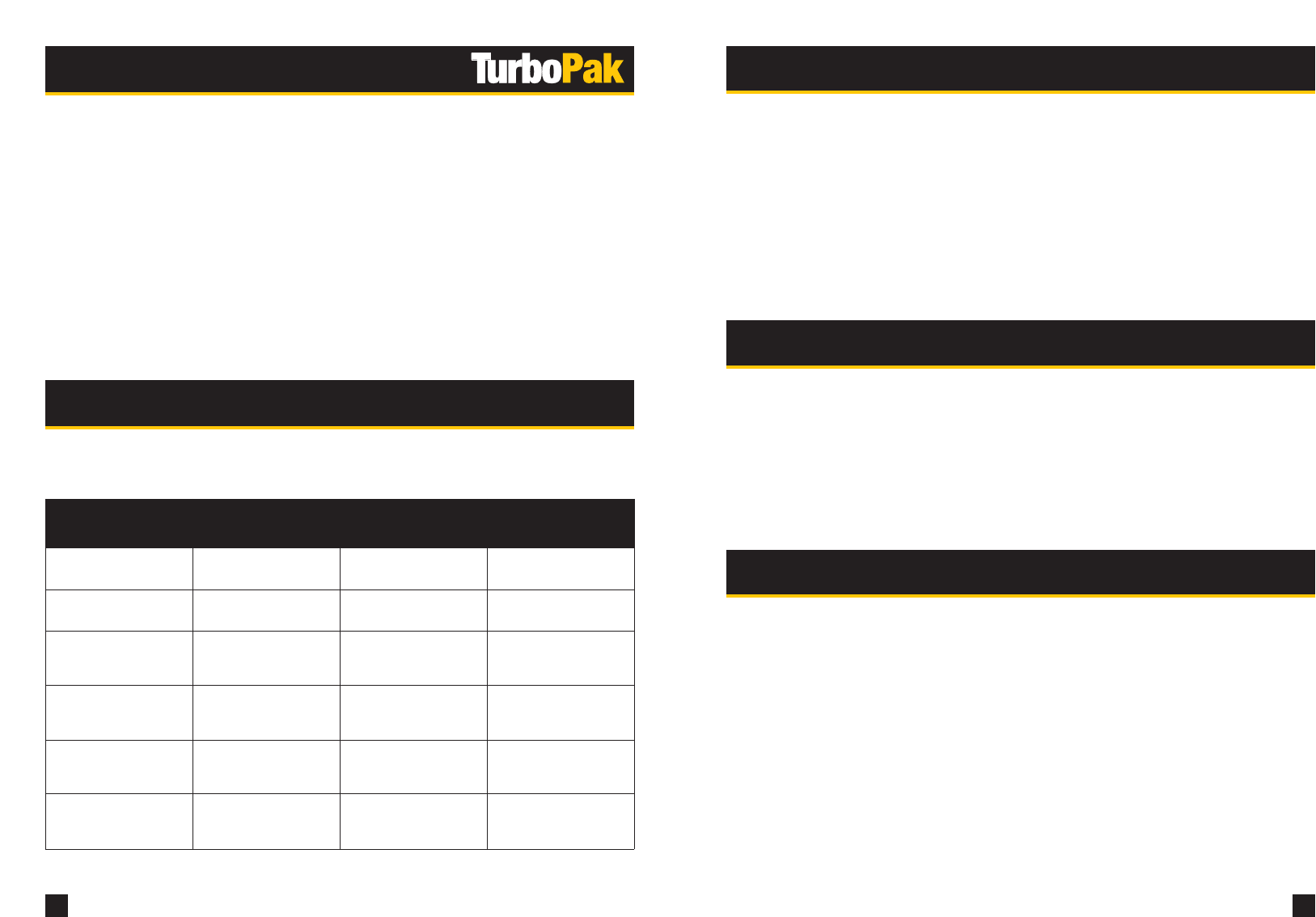
Controlling the TurboPak
Battery Level Indicator
www.bowens.co.uk8 www.bowens.co.uk 9
The Battery Cassette can also be charged at the same time as the unit is being used and this will
effectively extend the number of flashes available. A discharged battery will take approximately 5-6
hours to fully charge.
For best results and maximum life from a Battery Cassette always keep it fully charged and avoid fully
discharging it. Always charge the Battery Cassette as soon as possible after use and never leave it flat.
For maximum duty and flexibility spare Battery Cassettes and charger's are available to allow swapping
out and charging outside of the TurboPak.
Head Socket
Each socket can power one Esprit Gemini / Travelite III monolight. When a head socket is not used it
should be fitted with a dummy plug. The unit will not operate unless ALL sockets are fitted with either a
dummy plug or a Gemini cable with a unit attached, whether switched on or not.
Battery Level Indicator
This shows the charge level of the battery from fully charged to flat. It also indicates when the unit is
disabled due to the battery voltage being too low for correct operation.
Battery Level Indication Approx Battery Voltage Battery Condition Action
Green, Yellow, Amber > 12.4V Good Okay for use
Yellow, Amber > 12.2V Fair Okay for use
Amber > 12.0V Low Okay for use but
getting low
Red < 12.0V Very Low Restricted use - charge
or replace ASAP
Flashing Red Only < 11.6V Flat Disabled - charge or
replace ASAP
Other colors flashing > 11.6V On Charge Disabled - wait or
replace ASAP
The TurboPak should not be allowed to fully discharge the Battery Cassette as this may significantly
reduce the future capacity and operating life of the Battery Cassette.
It is not recommended to keep using the TurboPak when the red battery low indicator is showing
although it will keep going until the flat battery condition is reached, when it will automatically switch off.
Always recharge the Battery Cassette as soon as possible after discharge. If FAST mode is selected
then this will be overridden once the battery indicator drops to the amber level to prevent excessive drain
from the near flat battery.
Spare Battery Cassettes and charger's are available so that discharged Modules can be quickly
replaced with a fully charged one to allow shooting to continue.
Charge Indicators
A charge indicator is fitted adjacent to each socket. In normal use these light to indicate that charge is
being supplied to the associated socket. Under fault conditions the indicators are also used in
combination to indicate the pack status or faults. See the section on Status & Fault Indication.
During normal use the TurboPak checks each socket to see if a monolight is fitted and switched on. If
one is fitted, it then checks to see if it requires a top-charge (i.e. the unit is READY) or requires a full
charge (i.e. the monolight has just been switched on or has been flashed). A brief flash of the
appropriate indicator shows a top-charge while an indicator remaining lit indicates full charge. The
monolights are fully charged one at a time while other units are topped up to keep them at READY.
Thermal Management
The internal temperature of the TurboPak is continually monitored to protect the unit against
overheating.
The charge rate is progressively decreased as the temperature increases to try and prevent the unit
from reaching the overheat condition after which it will be disabled. This allows continued shooting
albeit at a slower rate.
If the temperature rises above a preset level the internal fan is turned on to cool the TurboPak. Once
the TurboPak has cooled sufficiently the fan is turned off. This reduces the drain on the battery when
the TurboPak is used infrequently. If the ambient temperature is very high then the fan may be on for
longer or not turn off at all.
If the temperature is too high for correct operation then ALL charge will be disabled and an overheat
condition will be indicated. This will occur if the temperature sensor has a fault, the fan fails, or if the
ambient temperature is too low for correct operation.










